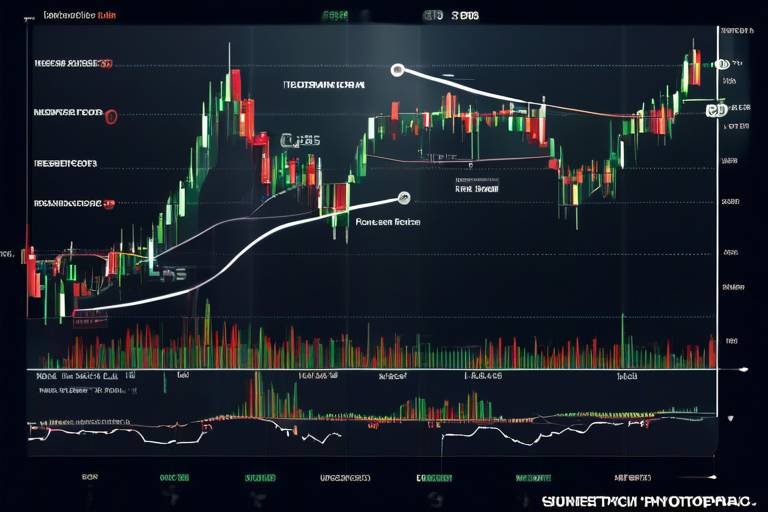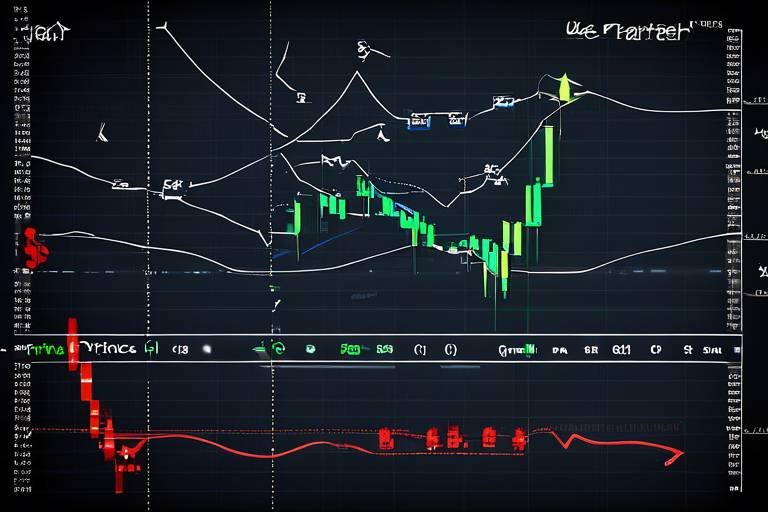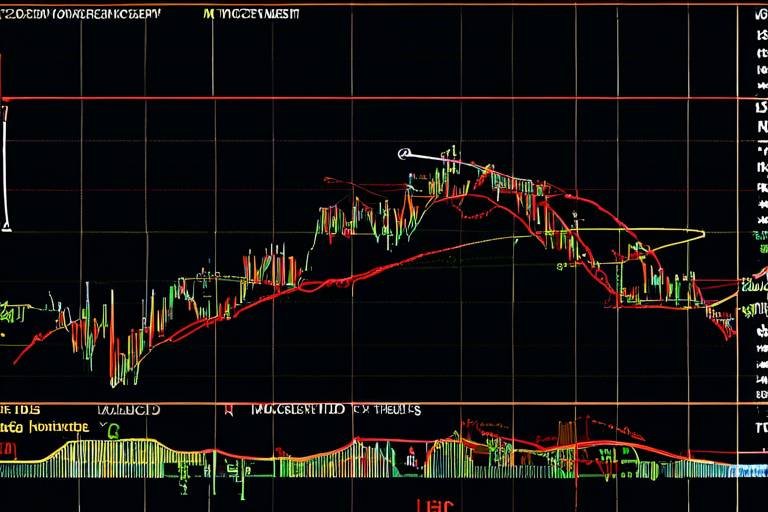How to Develop a Winning Crypto Trading Strategy
In the fast-paced world of cryptocurrency trading, developing a winning strategy is not just a luxury; it’s a necessity. With the market's notorious volatility, having a well-thought-out plan can mean the difference between profit and loss. Your strategy should encompass various elements, from market analysis and risk management to psychological discipline, each playing a crucial role in enhancing your trading performance and profitability. So, how do you craft this perfect strategy? Let’s dive into the essential components that can help you navigate the exhilarating yet treacherous waters of crypto trading.
The first step in developing a successful trading strategy is to gain a comprehensive understanding of the cryptocurrency market. Unlike traditional markets, the crypto market is characterized by extreme volatility and rapid price fluctuations. Factors influencing price movements include market sentiment, regulatory news, technological advancements, and macroeconomic trends. By keeping an eye on these elements, you can better anticipate market shifts and make informed trading decisions. Knowledge is power in this arena, and the more you know, the better equipped you’ll be to seize opportunities as they arise.
Once you grasp the market dynamics, the next step is setting clear goals for your trading journey. Establishing specific, measurable, achievable, relevant, and time-bound (SMART) goals can provide direction and focus. Ask yourself: What do you want to achieve in your trading? Whether it’s generating a specific return on investment or simply learning the ropes, having a clear vision will guide your decisions. For instance, you might aim to increase your portfolio by 20% over the next six months. This clarity can help you stay committed and motivated, even when the market gets rocky.
In the realm of crypto trading, understanding the difference between short-term and long-term strategies is essential. Short-term trading, often referred to as day trading, involves executing multiple trades within a single day, capitalizing on small price movements. On the other hand, long-term trading, or HODLing, focuses on holding assets for an extended period, banking on their potential appreciation over time. Each approach has its pros and cons, and the choice largely depends on your financial goals and risk tolerance. Are you looking for quick wins, or do you believe in the long-term potential of certain cryptocurrencies?
For those inclined towards day trading, mastering effective techniques can greatly enhance your profitability. Key strategies include:
- Scalping: This involves making numerous trades throughout the day to capture small price changes.
- Momentum Trading: Traders buy assets that are trending upward, hoping to ride the wave of momentum.
- News Trading: Reacting quickly to news releases can create opportunities for profit.
However, remember that day trading requires a keen understanding of market trends and often involves higher risks.
If you lean toward a long-term perspective, the HODLing strategy might be more suitable. This approach requires patience and a strong belief in the underlying technology of the cryptocurrency. While the market can be volatile in the short term, holding onto your assets through the ups and downs can yield substantial returns over time. Think of it as planting a tree; it takes time to grow, but the shade it provides in the future is worth the wait.
No trading strategy is complete without robust risk management. Protecting your investments is crucial, especially in the volatile crypto market. Implementing strategies like setting stop-loss orders, diversifying your portfolio, and only investing what you can afford to lose can safeguard your assets against unexpected market downturns. Remember, it’s not just about how much you make but also about how much you can afford to lose.
Utilizing technical analysis tools is another cornerstone of a successful trading strategy. These tools, including charts and indicators, allow traders to identify trends and make informed decisions based on historical price movements. Familiarizing yourself with these instruments can provide valuable insights into market behavior.
Recognizing chart patterns can be a game-changer. Patterns like head and shoulders, double tops, and flags can indicate potential market reversals or continuations. By learning to identify these patterns, you can better time your trades and enhance your chances of success.
Common indicators and oscillators, such as Moving Averages and the Relative Strength Index (RSI), are essential for evaluating market conditions. These tools help traders identify entry and exit points, making it easier to navigate the crypto landscape. Understanding how to use these indicators effectively can significantly enhance your trading strategy.
Lastly, maintaining psychological discipline is vital for executing your trading strategy effectively. Emotions can heavily influence decision-making, often leading to costly mistakes. Understanding how to manage emotions like fear and greed can help you stick to your strategy, ensuring that impulsive decisions don’t jeopardize your investments.
Successful traders know that emotional control is just as important as technical skills. Developing techniques to manage your emotions can keep you grounded, allowing you to make rational decisions even during market chaos. Consider practices like mindfulness or journaling your trades to reflect on your emotional state.
Establishing a consistent trading routine fosters discipline and helps you stay focused on your goals. This routine can include regular market analysis, reviewing your trades, and setting aside time for continuous learning. Just like athletes practice their skills, traders must also hone their craft to achieve success.
Q: What is the best trading strategy for beginners?
A: Beginners should consider starting with a long-term HODLing strategy while learning about the market. This approach allows for gradual understanding without the stress of day trading.
Q: How much money do I need to start trading cryptocurrencies?
A: You can start with a small amount, but it's essential to only invest what you can afford to lose. Many platforms allow you to trade with minimal initial investments.
Q: Is it necessary to use technical analysis?
A: While not mandatory, technical analysis can significantly improve your trading decisions by helping you understand market trends and patterns.
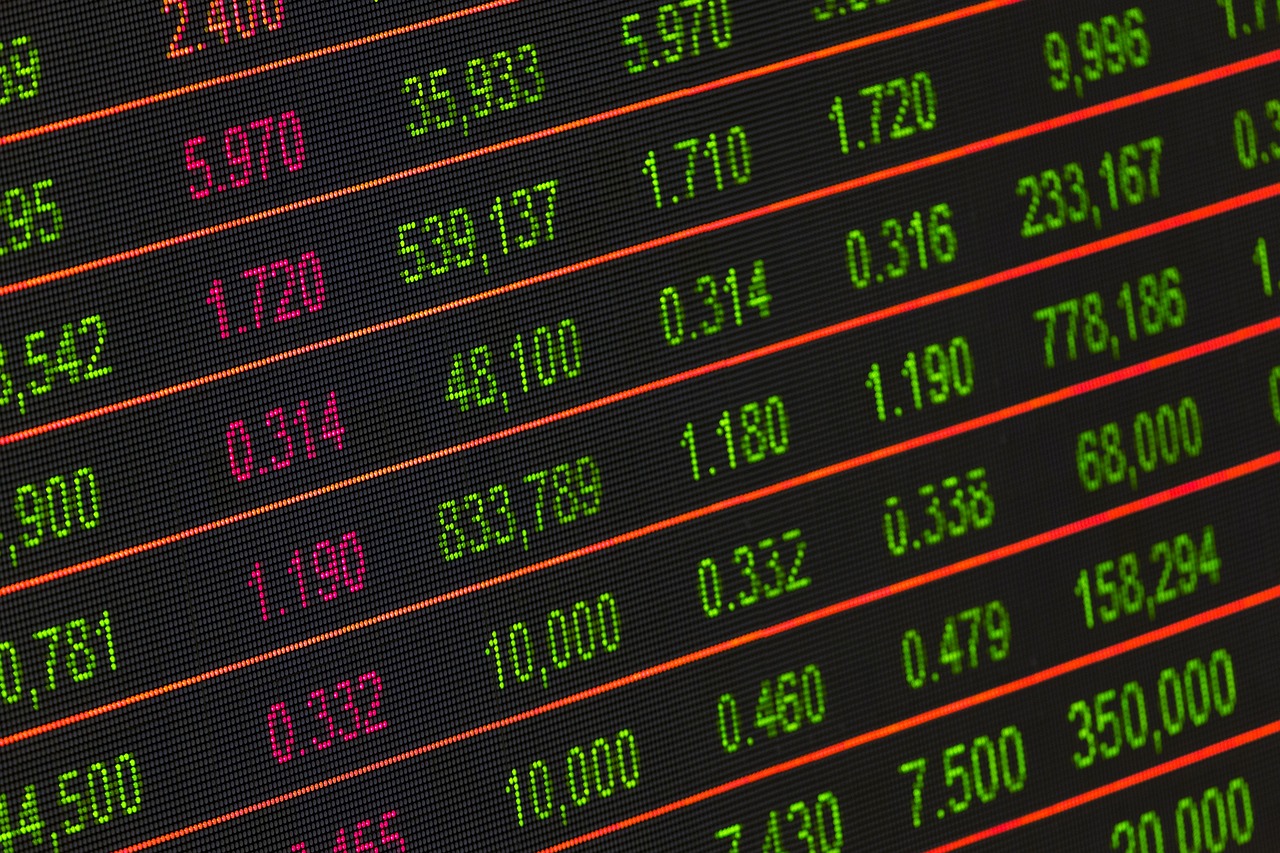
Understanding the Crypto Market
The cryptocurrency market is akin to a wild roller coaster ride, full of ups and downs, twists and turns that can leave even the most seasoned traders breathless. To navigate this thrilling landscape successfully, one must first grasp the fundamental aspects of the market, including its inherent volatility, the prevailing trends, and the myriad factors that influence price movements. Understanding these elements is crucial for developing a successful trading strategy that can withstand the test of time.
At its core, the crypto market is characterized by its high volatility. Prices can surge or plummet within minutes, driven by news events, market sentiment, and even social media trends. For instance, a single tweet from a prominent figure can cause a ripple effect, sending prices skyrocketing or crashing down. This volatility can be both a blessing and a curse; while it presents opportunities for significant profits, it also poses risks that can lead to devastating losses if not managed properly.
In addition to volatility, recognizing market trends is essential for any trader. Trends can be categorized as bullish (upward movement) or bears (downward movement), and understanding these trends can help traders make informed decisions. For example, during a bullish trend, traders may look for opportunities to buy, while in a bearish market, they might consider selling or shorting their positions. The ability to identify these trends requires a keen eye and a solid understanding of market analysis techniques.
Several factors influence price movements in the crypto market, including:
- Market Sentiment: The collective feelings of traders can drive prices up or down. Positive news can create a buying frenzy, while negative news can lead to panic selling.
- Regulatory Changes: Government regulations can significantly impact the market. Announcements regarding regulations can lead to immediate price fluctuations.
- Technological Developments: Innovations within blockchain technology or specific cryptocurrencies can enhance their value, attracting more investors.
- Supply and Demand: The basic economic principle of supply and demand plays a crucial role. Limited supply with high demand typically drives prices higher.
To effectively participate in the crypto market, traders must not only understand these dynamics but also stay informed about the latest news and trends. Utilizing resources such as market analysis tools, news platforms, and social media can provide valuable insights into market movements. Additionally, keeping an eye on global economic indicators can help traders anticipate potential shifts in the crypto landscape.
In summary, understanding the crypto market is the first step towards developing a winning trading strategy. By recognizing the volatility, identifying trends, and being aware of the various factors that influence prices, traders can position themselves to make informed decisions. This foundation will serve as a springboard for further exploration into the intricacies of trading strategies, risk management, and the psychological aspects of trading.
- What is cryptocurrency? Cryptocurrency is a digital or virtual currency that uses cryptography for security and operates on a technology called blockchain.
- Why is the crypto market so volatile? The crypto market is volatile due to factors like market sentiment, regulatory changes, technological developments, and supply and demand dynamics.
- How can I start trading cryptocurrencies? To start trading, you need to choose a reliable exchange, create an account, deposit funds, and develop a trading strategy.

Setting Clear Goals
When it comes to trading cryptocurrencies, having a clear roadmap can mean the difference between success and failure. Think of your trading goals as a compass guiding you through the unpredictable waters of the crypto market. Without a clear direction, you might find yourself lost amidst the volatility and hype. So, how do you set goals that not only inspire you but also keep you grounded? The answer lies in the SMART criteria—specific, measurable, achievable, relevant, and time-bound. Let’s break this down!
Specific goals are crucial. Instead of saying, “I want to make money trading,” try something like, “I aim to earn $5,000 in the next three months through cryptocurrency trading.” This specificity gives you a target to aim for, making it easier to formulate a strategy. Next, your goals need to be measurable. You should be able to track your progress. Using a trading journal can help you document your trades and assess whether you are on track to meet your objectives.
Now, let’s talk about achievable goals. It’s essential to set targets that are within reach. If you're a beginner, aiming for a 100% return in a month might be unrealistic. Instead, focus on smaller, incremental gains. For instance, setting a goal to improve your trading skills by taking a course or reading a book can be a good starting point. This way, you build your knowledge base while working towards your financial goals.
Another vital aspect is ensuring your goals are relevant. They should align with your overall financial objectives and personal circumstances. If you have a full-time job, day trading might not be the best fit for you. Instead, consider strategies that allow for more flexibility, like swing trading or investing in projects you believe in for the long term. Lastly, your goals must be time-bound. Setting a deadline creates urgency and keeps you accountable. For example, “I will review my trading performance every month” keeps you engaged and allows you to adjust your strategy as needed.
Here’s a quick look at how you can structure your goals:
| SMART Criteria | Example Goal |
|---|---|
| Specific | Earn $5,000 in the next three months through crypto trading. |
| Measurable | Track progress using a trading journal. |
| Achievable | Improve trading skills by completing a course. |
| Relevant | Focus on swing trading due to a full-time job. |
| Time-bound | Review trading performance every month. |
In conclusion, setting clear goals in your crypto trading journey is not just a good practice; it’s a necessity. By following the SMART criteria, you create a framework that not only motivates you but also provides a clear path to achieving your financial aspirations. Remember, every trader’s journey is unique, so tailor your goals to fit your personal circumstances and market conditions. Now, let’s dive deeper into the world of trading strategies!
- What are the most common mistakes traders make when setting goals?
Many traders set vague or overly ambitious goals, which can lead to frustration and burnout. It’s important to be realistic and specific. - How often should I review my trading goals?
Regular reviews, such as monthly or quarterly, can help you stay on track and make necessary adjustments based on market conditions. - Can I change my goals as I gain more experience?
Absolutely! As you learn and grow as a trader, it’s natural for your goals to evolve. Just ensure they remain SMART.

Short-term vs. Long-term Trading
When it comes to trading cryptocurrencies, one of the first decisions you’ll need to make is whether to adopt a short-term or long-term trading strategy. Each approach has its own unique set of characteristics, advantages, and challenges, making it essential to choose one that aligns with your financial goals and risk tolerance. Think of it like choosing between a sprint and a marathon—both are races, but they require different levels of endurance and strategy.
Short-term trading, often referred to as day trading or swing trading, involves making quick trades to capitalize on small price fluctuations. Traders who opt for this method usually execute multiple trades within a single day, aiming to close positions before the market closes. This approach can be thrilling, like riding a roller coaster, as you experience the ups and downs of the market in real-time. However, it also requires a significant amount of time, attention, and emotional resilience. You need to be constantly monitoring the charts and news to make informed decisions.
On the other hand, long-term trading, commonly known as HODLing, is akin to planting a tree and watching it grow over time. This strategy involves buying and holding cryptocurrencies for an extended period, often years, regardless of short-term market volatility. Long-term traders believe in the potential of their chosen assets and are willing to endure market fluctuations for the sake of future gains. This approach requires patience and a strong conviction in the underlying technology or project. A long-term strategy can be less stressful, as it doesn’t demand constant market monitoring.
To give you a clearer picture, here’s a simple comparison of the two strategies:
| Feature | Short-term Trading | Long-term Trading |
|---|---|---|
| Time Commitment | High | Low |
| Risk Level | Higher | Lower |
| Emotional Stress | High | Low |
| Profit Potential | Quick gains | Long-term growth |
Ultimately, the choice between short-term and long-term trading should be based on your personal circumstances. If you thrive on excitement and have the time to dedicate to trading, short-term strategies might be your cup of tea. However, if you prefer a more laid-back approach and believe in the long-term potential of your investments, then HODLing could be the way to go. Remember, there’s no one-size-fits-all answer, and many traders find success by blending both strategies to create a balanced portfolio.
As you navigate the thrilling world of crypto trading, take the time to evaluate your goals, risk appetite, and available resources. With the right strategy in place, you’ll be better equipped to tackle the challenges of this dynamic market.
- What is the best trading strategy for beginners? - Beginners may find long-term trading less stressful as it requires less constant monitoring.
- Can I switch from short-term to long-term trading? - Absolutely! Many traders adapt their strategies as they gain experience or as market conditions change.
- How do I manage risk in short-term trading? - Setting stop-loss orders and diversifying your portfolio can help mitigate risks.

Day Trading Techniques
Day trading is like riding a roller coaster; it’s thrilling, fast-paced, and can lead to significant gains or losses in a matter of hours. If you're considering diving into this exhilarating world, it's crucial to equip yourself with effective techniques that can help you maximize profits while minimizing risks associated with rapid market movements. The essence of day trading lies in seizing short-term opportunities and capitalizing on price fluctuations throughout the day.
One of the fundamental techniques employed by day traders is the use of scalping. This strategy involves making numerous trades within a single day, aiming to profit from small price changes. Scalpers often hold positions for just a few minutes, executing dozens of trades in a day. It requires a keen eye on market trends and a quick trigger finger to capitalize on fleeting opportunities. However, if you choose this path, be prepared for intense concentration and swift decision-making.
Another popular technique is momentum trading. This approach focuses on stocks or cryptocurrencies that are moving significantly in one direction on high volume. Day traders look for strong trends and aim to ride the momentum for as long as possible. It's like catching a wave; you want to paddle out just as it's forming and ride it all the way to the shore. However, timing is everything; entering too late can lead to losses.
Additionally, employing a trailing stop-loss can be a game-changer for day traders. This technique allows you to secure profits while minimizing potential losses. A trailing stop-loss moves with the market price, locking in gains as the price increases. For instance, if you buy a cryptocurrency at $100 and set a trailing stop-loss at $5, the stop-loss will adjust as the price rises, ensuring you don’t lose more than $5 from your highest point. This technique is particularly useful in the volatile crypto market, where prices can swing dramatically in a short period.
Furthermore, utilizing technical indicators can enhance your day trading strategy. Indicators like the Moving Average Convergence Divergence (MACD) and Bollinger Bands can provide insights into market trends and potential reversal points. For example, when the MACD crosses above the signal line, it may indicate a buying opportunity. On the other hand, Bollinger Bands help traders identify overbought or oversold conditions, guiding their buy or sell decisions.
To put these techniques into practice, traders often develop a trading plan. A well-structured plan outlines entry and exit points, risk management strategies, and specific criteria for executing trades. This plan acts as your roadmap, ensuring you stay focused and disciplined amidst the chaos of the market. Remember, the key to successful day trading isn't just about making money; it's about minimizing losses and maintaining a consistent approach.
In conclusion, day trading can be both rewarding and challenging. By mastering techniques like scalping, momentum trading, and effective use of technical indicators, you can navigate the turbulent waters of the crypto market with confidence. Just remember: patience, discipline, and a solid strategy are your best friends in this fast-paced trading arena.
- What is day trading? Day trading involves buying and selling financial instruments within the same trading day, aiming to profit from short-term price movements.
- How much capital do I need to start day trading? While there’s no set amount, many brokers require a minimum of $25,000 to day trade stocks in the U.S. However, for cryptocurrencies, you can start with much less.
- Is day trading risky? Yes, day trading carries a high level of risk due to the volatility of the markets. It’s essential to have a solid strategy and risk management plan in place.
- Can I day trade part-time? Absolutely! Many traders day trade part-time, but it requires discipline and a well-planned strategy to be successful.

HODLing Strategy
The is a popular approach among cryptocurrency enthusiasts, and for good reason. Originating from a misspelled forum post in 2013, "HODL" has since evolved into an acronym for "Hold On for Dear Life." This strategy is all about patience and a firm belief in the long-term potential of your chosen cryptocurrencies. Unlike day trading, which requires constant attention to market fluctuations, HODLing allows you to take a step back and let your investments mature over time.
One of the key advantages of HODLing is that it helps you avoid the emotional rollercoaster that often accompanies trading. When you’re constantly watching the market, it’s easy to get swept up in the hype of price surges or panic during downturns. By committing to a HODLing strategy, you can focus on the underlying technology and fundamentals of the cryptocurrency you’re investing in, rather than getting distracted by short-term price movements.
However, HODLing isn't just about mindlessly holding onto your assets. It requires a strategic approach to selecting the right cryptocurrencies. Here are some factors to consider when choosing which coins to HODL:
- Project Viability: Look for cryptocurrencies with strong fundamentals, innovative technology, and a dedicated development team.
- Market Position: Consider the market cap and the coin's position within the broader cryptocurrency ecosystem.
- Community Support: A strong community can indicate a healthy project and can be a good sign of future growth.
Moreover, HODLing can be incredibly rewarding if you choose the right time to enter the market. For instance, many early adopters of Bitcoin and Ethereum have seen their investments skyrocket over the years. However, it’s essential to remember that the crypto market is notoriously volatile. Just because you believe in a project doesn’t mean it won’t experience significant price drops along the way.
To mitigate risks while HODLing, consider diversifying your portfolio. By spreading your investments across multiple cryptocurrencies, you can protect yourself against the failure of any single asset. Here’s a simple table outlining a potential diversification strategy:
| Cryptocurrency | Percentage of Portfolio |
|---|---|
| Bitcoin (BTC) | 40% |
| Ethereum (ETH) | 30% |
| Cardano (ADA) | 15% |
| Solana (SOL) | 10% |
| Other Altcoins | 5% |
In conclusion, the HODLing strategy is not just a passive investment approach; it’s a commitment to the long-term vision of the cryptocurrency market. By understanding the projects you invest in and maintaining a disciplined mindset, you can ride out the volatility and potentially reap significant rewards. Remember, it’s not about timing the market; it’s about time in the market. So, are you ready to HODL?
What does HODL mean?
HODL is a misspelled term that stands for "Hold On for Dear Life," referring to the strategy of holding onto cryptocurrencies for the long term rather than selling during market fluctuations.
Is HODLing a good strategy?
HODLing can be a good strategy for those who believe in the long-term potential of their investments and want to avoid the stress of day trading. However, it requires careful selection of cryptocurrencies and a strong belief in their fundamentals.
How do I choose which cryptocurrencies to HODL?
When choosing cryptocurrencies to HODL, consider factors such as project viability, market position, and community support. Diversifying your portfolio can also help mitigate risks.
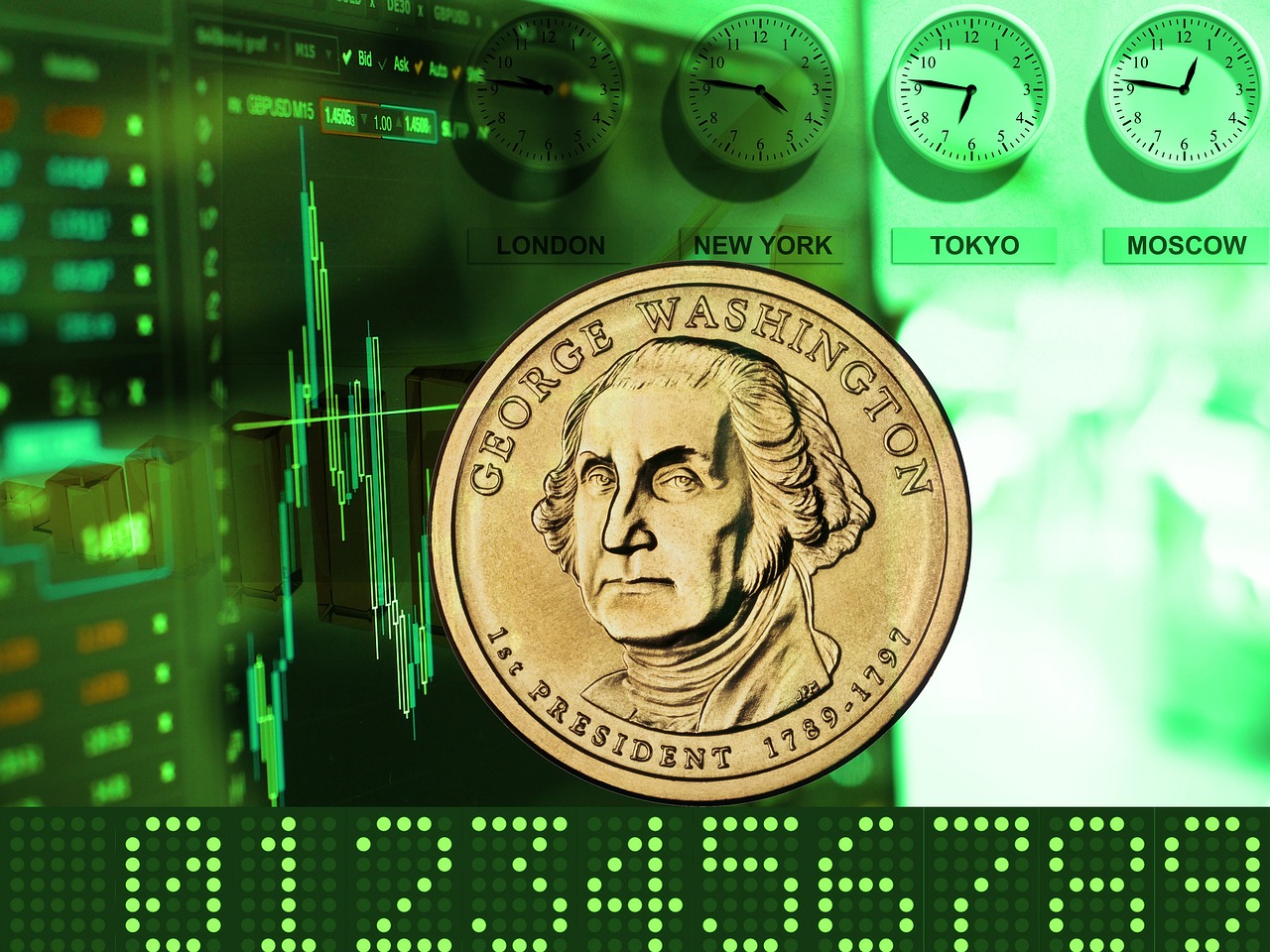
Risk Management Essentials
When diving into the world of cryptocurrency trading, one of the most critical aspects to consider is risk management. Think of it as your safety net; without it, you might find yourself tumbling down the financial cliff. The crypto market is notorious for its high volatility, which means that prices can swing wildly in a matter of minutes. To navigate this unpredictable landscape, you need a solid plan in place to protect your investments and ensure longevity in your trading journey.
First and foremost, it's essential to determine how much of your total capital you're willing to risk on any single trade. A common guideline is to risk only 1-2% of your trading capital on each trade. This way, even a string of losses won't wipe out your account. For example, if you have a trading account with $10,000, risking 1% means you would only lose $100 on a single trade. This strategy allows you to endure losses while still having enough capital to continue trading.
Another vital component of risk management is the use of stop-loss orders. These orders automatically sell your assets when they reach a certain price, limiting your potential losses. Imagine you're on a roller coaster that suddenly drops; a stop-loss order is like the safety harness that keeps you secure. By setting stop-loss levels based on your risk tolerance and market conditions, you can protect yourself from catastrophic losses.
Moreover, diversifying your portfolio is a key strategy in risk management. Instead of putting all your eggs in one basket, consider spreading your investments across different cryptocurrencies. This way, if one asset takes a nosedive, your entire portfolio won't suffer. You might want to allocate your investments as follows:
| Cryptocurrency | Percentage of Portfolio |
|---|---|
| Bitcoin | 40% |
| Ethereum | 30% |
| Litecoin | 15% |
| Ripple | 10% |
| Others | 5% |
By diversifying, you not only spread the risk but also increase your chances of capitalizing on different market trends. However, remember that even the best strategies can fail if you let emotions dictate your decisions. This brings us to the importance of maintaining a psychological edge in trading. Fear and greed can cloud your judgment, leading to impulsive decisions that can derail your strategy. It's crucial to stick to your plan and not let emotions take the wheel.
Lastly, continuously evaluate and adjust your risk management strategies as you gain experience and as market conditions change. Regularly reviewing your trades and their outcomes can provide valuable insights into what works and what doesn’t. This iterative process helps refine your approach, making you a more adept trader over time.
- What is risk management in crypto trading? Risk management in crypto trading refers to the strategies and techniques used to minimize potential losses and protect your investments.
- How much should I risk on each trade? A common recommendation is to risk only 1-2% of your total trading capital on any single trade.
- What is a stop-loss order? A stop-loss order is an instruction to sell an asset when it reaches a certain price, helping to limit potential losses.
- Why is diversification important? Diversification helps spread risk across different assets, reducing the impact of a poor-performing investment on your overall portfolio.
- How can I manage my emotions while trading? Developing a solid trading plan and sticking to it, along with maintaining a disciplined routine, can help manage emotions in trading.

Technical Analysis Tools
When it comes to navigating the tumultuous waters of the cryptocurrency market, having a solid grip on is like having a reliable compass on a stormy sea. These tools help traders make sense of price movements and market trends, allowing them to make informed decisions rather than relying on gut feelings. Technical analysis involves studying historical price data, and with the right tools, you can uncover patterns and trends that might otherwise go unnoticed. This can be the difference between making a profitable trade and watching your investment dwindle away.
One of the most fundamental aspects of technical analysis is the use of charts. Charts visually represent price movements over time, and they come in various forms such as line charts, bar charts, and candlestick charts. Each type has its unique advantages, but candlestick charts are particularly popular among crypto traders because they provide more information, including open, high, low, and close prices within a specific time frame. This allows traders to gauge market sentiment and potential price movements with greater accuracy.
In addition to charts, traders often employ various indicators and oscillators to further refine their analysis. These tools help to identify trends, momentum, and potential reversal points. For example, the Moving Average (MA) smooths out price data to identify the direction of the trend over a specified period. On the other hand, the Relative Strength Index (RSI) measures the speed and change of price movements, helping traders determine whether an asset is overbought or oversold. Understanding how to use these indicators effectively can significantly enhance your trading strategy.
To illustrate the importance of these tools, consider the following table that highlights some of the most commonly used indicators in crypto trading:
| Indicator | Purpose | How to Use |
|---|---|---|
| Moving Average (MA) | Identifies the direction of the trend | Look for crossovers between short-term and long-term MAs |
| Relative Strength Index (RSI) | Measures overbought or oversold conditions | Buy when RSI is below 30; sell when above 70 |
| Bollinger Bands | Indicates volatility and potential price reversals | Trade when price touches the upper or lower band |
| MACD (Moving Average Convergence Divergence) | Shows momentum and trend direction | Look for crossovers between the MACD line and the signal line |
While technical analysis tools are invaluable, it's essential to remember that they are not foolproof. They should be used in conjunction with other forms of analysis, such as fundamental analysis, to create a well-rounded trading strategy. The crypto market is notoriously volatile, and relying solely on technical indicators can lead to misinterpretation of market conditions. Therefore, staying informed about market news and trends will help you make more educated decisions.
In conclusion, mastering technical analysis tools is a crucial step for any trader looking to succeed in the crypto space. By combining charts, indicators, and a solid understanding of market dynamics, you can enhance your trading performance and increase your chances of profitability. Remember, trading is not just about making quick profits; it's about developing a comprehensive strategy that considers both technical and fundamental aspects of the market.
- What is technical analysis? Technical analysis is the study of past market data, primarily price and volume, to forecast future price movements.
- How do I choose the right technical analysis tools? The right tools depend on your trading style and goals. Experiment with different indicators and charts to find what works best for you.
- Can technical analysis guarantee profits? No, while technical analysis can improve your trading decisions, it cannot guarantee profits due to the unpredictable nature of the market.
- Is it better to use technical analysis alone? It’s advisable to combine technical analysis with fundamental analysis for a more comprehensive trading strategy.

Chart Patterns
When it comes to trading cryptocurrencies, understanding is like having a treasure map in a vast ocean. These patterns can reveal the psychology of market participants and help predict future price movements. By analyzing historical price data, traders can identify recurring formations that often signal potential reversals or continuations in the market. This is crucial because, in the volatile world of crypto, a single misstep can lead to significant losses.
One of the most recognized patterns is the head and shoulders formation. This pattern typically indicates a reversal in trend. Imagine a mountain range: the left shoulder forms as the price rises, followed by a peak (the head) that reaches a higher price, and then a decline leading to the right shoulder, which is lower than the head but similar to the left shoulder. Recognizing this pattern can alert traders to a potential downturn, prompting them to sell before the price drops.
Conversely, the double top pattern is another critical formation to watch for. This pattern occurs when the price reaches a peak twice but fails to break through, signaling that the upward momentum may be weakening. Think of it as a basketball player trying to dunk twice in a row but being blocked both times. This failure to overcome resistance can lead to a sharp price decline, making it an essential pattern for traders to recognize.
Understanding these patterns is not just about spotting them; it’s about integrating them into a broader trading strategy. For example, a trader might use chart patterns in conjunction with other indicators to confirm their predictions. This is where the beauty of technical analysis lies—combining various tools to create a robust trading strategy. Below is a simple table summarizing some common chart patterns and what they typically indicate:
| Chart Pattern | Indication |
|---|---|
| Head and Shoulders | Potential trend reversal (from bullish to bearish) |
| Double Top | Bearish reversal signal |
| Double Bottom | Bullish reversal signal |
| Ascending Triangle | Continuation of an upward trend |
| Descending Triangle | Continuation of a downward trend |
Recognizing these patterns can significantly enhance your ability to make informed trading decisions. However, it’s important to remember that no pattern is foolproof. The market is influenced by a myriad of factors, including news events, market sentiment, and broader economic conditions. Therefore, while chart patterns provide valuable insights, they should always be used in conjunction with other forms of analysis and sound risk management practices.
In conclusion, mastering chart patterns is an essential skill for any crypto trader. By developing the ability to identify these formations, you can gain a competitive edge in the fast-paced world of cryptocurrency trading. Just like a skilled detective piecing together clues, effective analysis of chart patterns can lead you to profitable trading opportunities and help you navigate the unpredictable waters of the crypto market.
- What are chart patterns? Chart patterns are formations created by the price movements of an asset on a chart, which can indicate potential future price movements.
- How can I learn to identify chart patterns? Practice by analyzing historical charts and using demo trading platforms to gain experience without financial risk.
- Are chart patterns always reliable? No, while they can provide insights, they are not guaranteed indicators of future movements and should be used alongside other analysis methods.
- What is the best way to use chart patterns in trading? Combine them with technical indicators and sound risk management strategies to improve your trading decisions.

Indicators and Oscillators
When it comes to trading in the highly volatile crypto market, indicators and oscillators are your best friends. These tools provide traders with crucial insights into market trends and potential price movements, acting like a compass in the turbulent waters of cryptocurrency trading. Imagine trying to navigate through a storm without a map—confusing, right? That's why understanding how to use these tools effectively can make all the difference in your trading journey.
Indicators are mathematical calculations based on price, volume, or open interest of a security. They help traders identify trends and potential reversals in the market. For instance, the Moving Average (MA) is a popular indicator that smooths out price data by creating a constantly updated average price. This helps traders understand whether a market is trending up or down. On the other hand, oscillators are a type of indicator that fluctuates between a fixed range, usually between 0 and 100. They are particularly useful in identifying overbought or oversold conditions in the market.
Some of the most commonly used indicators and oscillators in crypto trading include:
- Relative Strength Index (RSI): This oscillator measures the speed and change of price movements. An RSI above 70 typically indicates that an asset is overbought, while an RSI below 30 suggests it might be oversold.
- Moving Averages (MA): As mentioned earlier, MAs help smooth out price data. Traders often look at the Simple Moving Average (SMA) and the Exponential Moving Average (EMA) to determine market trends.
- Bollinger Bands: This indicator consists of a middle band (SMA) and two outer bands that represent volatility. When the price hits the upper band, it may indicate that the asset is overbought, while touching the lower band suggests it may be oversold.
By combining these indicators and oscillators, traders can develop a more comprehensive view of market conditions. For example, if the RSI indicates that a cryptocurrency is overbought and the price is touching the upper Bollinger Band, it might be a good time to consider selling. Conversely, if the RSI shows that an asset is oversold and the price is near the lower Bollinger Band, it could present a buying opportunity.
However, it's important to remember that no indicator or oscillator is foolproof. They should be used in conjunction with other forms of analysis, such as fundamental analysis and market sentiment, to make well-informed trading decisions. Think of indicators and oscillators as part of a larger toolkit—each tool has its purpose, but together they can provide a clearer picture of the market landscape.
In conclusion, mastering the use of indicators and oscillators is essential for any crypto trader looking to enhance their trading strategy. By understanding how these tools work and applying them wisely, you can improve your chances of making profitable trades while minimizing risks. So, take the time to learn about these powerful tools, and you'll be better equipped to navigate the exciting world of cryptocurrency trading!
- What are indicators and oscillators in trading?
Indicators are mathematical calculations that help traders identify market trends, while oscillators are a type of indicator that fluctuates within a fixed range to signal overbought or oversold conditions. - How do I choose the right indicators for my trading strategy?
It's essential to select indicators that align with your trading style and goals. Experimenting with different indicators and analyzing their effectiveness in various market conditions can help you find the best fit. - Can I rely solely on indicators for trading decisions?
No, while indicators can provide valuable insights, they should be used in conjunction with other analysis methods, such as fundamental analysis and sentiment analysis, for well-rounded trading decisions.

Psychological Discipline in Trading
The world of cryptocurrency trading is as exhilarating as it is unpredictable. One moment you could be riding high on a wave of profits, and the next, you might find yourself caught in a storm of losses. This is where psychological discipline comes into play. It’s not just about having a solid trading plan; it’s about sticking to that plan, especially when emotions run high. Think of trading like a roller coaster ride: you can’t let the ups and downs dictate your actions. Instead, you need to keep your hands inside the ride at all times and trust the process.
Maintaining psychological discipline is crucial for executing a trading strategy effectively. Emotions such as fear and greed can cloud your judgment, leading to impulsive decisions that could jeopardize your investments. For instance, imagine you’ve just watched a cryptocurrency skyrocket in value. The excitement might tempt you to jump in, but without proper analysis, you could be setting yourself up for a fall. On the flip side, a sudden drop might trigger panic, prompting you to sell at a loss. This is why understanding and managing your emotions is key.
To cultivate psychological discipline, it’s essential to develop a routine that reinforces your trading strategy. A consistent approach helps you stay focused on your goals and minimizes the impact of emotional fluctuations. Here’s how you can establish a routine:
- Set a Schedule: Allocate specific times for trading and stick to them. This helps create a sense of normalcy and reduces impulsive trading.
- Review Your Trades: After each trading session, take time to analyze your decisions. What went well? What could you improve? This reflection is crucial for growth.
- Limit Information Overload: While staying informed is important, too much information can lead to confusion and anxiety. Choose a few reliable sources and stick to them.
Moreover, it’s essential to recognize the psychological traps that traders often fall into. For example, the “sunk cost fallacy” can lead you to hold onto losing trades in the hope that they will bounce back, simply because you’ve already invested time and money. Understanding these psychological pitfalls can empower you to make more rational decisions and stick to your trading plan.
In summary, psychological discipline in trading is about mastering your emotions and developing a structured approach to your trading activities. By establishing a routine, reflecting on your trades, and being aware of psychological traps, you can enhance your trading performance and increase your chances of success in the volatile world of cryptocurrency.
- What is psychological discipline in trading? Psychological discipline refers to the ability to manage emotions and stick to a trading plan, which is crucial for making rational decisions in the volatile crypto market.
- Why is it important to manage emotions in trading? Emotions like fear and greed can lead to impulsive decisions that jeopardize investments. Managing these emotions helps traders stick to their strategies.
- How can I develop a trading routine? Establish a consistent schedule for trading, review your trades regularly, and limit information overload to maintain focus and discipline.

Managing Emotions
In the high-stakes world of crypto trading, managing emotions is not just a skill—it's an art. Picture this: you’ve just made a significant investment, and the market takes a nosedive. Your heart races, and suddenly, all your carefully laid plans seem to evaporate. Fear and anxiety creep in, pushing you towards impulsive decisions that could jeopardize your hard-earned money. This scenario is all too common among traders, and that's why mastering emotional control is crucial.
Emotions like fear and greed can cloud judgment, leading to poor trading choices. When prices are soaring, it’s easy to get caught up in the excitement, convincing yourself that this upward trend will never end. Conversely, when the market dips, panic can set in, prompting you to sell at a loss rather than holding on for a potential rebound. The key here is to recognize these emotional triggers and develop strategies to manage them effectively.
One effective technique for managing emotions is to create a trading plan that includes clear entry and exit points. By having predetermined strategies, you can reduce the influence of emotions on your decisions. Consider the following components when crafting your plan:
- Set Stop-Loss Orders: These are automated instructions to sell your asset at a specific price, limiting your potential losses.
- Define Profit Targets: Establish clear profit-taking levels to prevent the temptation of holding out for more than what the market may offer.
- Review Your Trades: Regularly analyze your past trades to understand what worked and what didn’t, helping you learn from both successes and mistakes.
Another essential aspect of emotional management is practicing mindfulness. By staying present and aware of your feelings, you can make more rational decisions. Techniques such as deep breathing, meditation, or even short breaks during trading sessions can help you regain composure when emotions run high. Remember, a calm mind is a trader's best ally.
Finally, it’s vital to cultivate a supportive environment. Surround yourself with fellow traders who understand the challenges of the market. Engaging in discussions, sharing experiences, and learning from one another can provide the emotional support needed to navigate the ups and downs of trading. Just as a ship needs a crew to weather a storm, so too do traders need a community to lean on during turbulent times.
In conclusion, managing emotions in crypto trading is about creating a balance between rational decision-making and emotional awareness. By implementing structured trading plans, practicing mindfulness, and fostering supportive relationships, you can enhance your trading experience and increase your chances of success. After all, in the world of crypto, it's not just about the numbers; it's also about the mindset.
- Why is emotional management important in trading? Emotional management helps prevent impulsive decisions that can lead to significant losses.
- How can I control my emotions while trading? Developing a trading plan, practicing mindfulness, and surrounding yourself with supportive traders can help.
- What are stop-loss orders? Stop-loss orders are automated instructions to sell an asset at a predetermined price to limit losses.

Developing a Trading Routine
Creating a trading routine is like setting the foundation of a house; without it, everything else is bound to crumble. A well-structured routine not only enhances your discipline but also helps you stay focused on your trading goals amidst the chaos of the crypto market. Imagine waking up every day with a clear plan of action, knowing exactly what to do and when to do it. Sounds refreshing, right? Let's dive into how you can develop a routine that works for you.
First and foremost, the key to a successful trading routine is consistency. You want to establish a daily schedule that includes specific times for analysis, trading, and review. For instance, you might start your day by checking the latest market news and trends, followed by a thorough analysis of your chosen cryptocurrencies. This way, you can make informed decisions rather than relying on gut feelings or random impulses. Consider creating a simple daily checklist to guide your routine:
| Time | Activity |
|---|---|
| 8:00 AM | Review market news and updates |
| 9:00 AM | Analyze charts and indicators |
| 10:00 AM | Execute trades based on analysis |
| 4:00 PM | Review trades and adjust strategies |
In addition to your daily activities, it's important to allocate time for emotional management. Trading can be an emotional rollercoaster, and without a strategy to keep your emotions in check, you might find yourself making rash decisions. Incorporating brief mindfulness or meditation sessions into your routine can be a game-changer. Just a few minutes of deep breathing or visualization can help clear your mind and prepare you for the day ahead.
Another essential aspect of developing a trading routine is setting aside time for continuous learning. The world of cryptocurrency is ever-evolving, and staying updated with the latest trends, tools, and strategies is crucial. Consider dedicating a portion of your week to read articles, watch webinars, or even participate in online trading communities. This not only broadens your knowledge but also connects you with like-minded traders who can offer valuable insights.
Finally, don't forget to review and adjust your routine regularly. What works today might not work tomorrow. By analyzing your trading performance and tweaking your routine accordingly, you can optimize your approach and enhance your chances of success. Remember, the goal is not to create a rigid schedule but rather a flexible framework that adapts to your evolving needs as a trader.
- How often should I review my trading routine?
It's advisable to review your routine at least once a month to ensure it aligns with your trading goals and market conditions. - Can I trade without a routine?
While it's possible, trading without a routine often leads to impulsive decisions and increased risk, making it harder to achieve consistent success. - What should I do if my routine isn't working?
If your routine isn't yielding the desired results, take a step back, analyze what might be going wrong, and be open to making necessary adjustments.
Frequently Asked Questions
- What is a crypto trading strategy?
A crypto trading strategy is a plan that outlines how a trader will buy and sell cryptocurrencies to achieve their financial goals. It includes market analysis, risk management, and psychological discipline to enhance trading performance.
- How do I understand the crypto market?
Understanding the crypto market involves analyzing its volatility, trends, and the factors influencing price movements. This knowledge is crucial for developing an effective trading strategy that can adapt to market changes.
- What are SMART goals in trading?
SMART goals are Specific, Measurable, Achievable, Relevant, and Time-bound objectives that guide your trading decisions. Setting these goals helps maintain focus and direction throughout your trading journey.
- What’s the difference between short-term and long-term trading?
Short-term trading focuses on making quick profits through frequent trades, while long-term trading involves holding assets for an extended period, allowing for potential growth despite market fluctuations. Your choice depends on your financial goals and risk tolerance.
- What are day trading techniques?
Day trading techniques involve executing multiple trades within a single day to capitalize on small price movements. Effective techniques can help maximize profits while minimizing risks associated with rapid market changes.
- What is the HODLing strategy?
HODLing is a long-term investment strategy where traders hold onto their assets despite market volatility, believing in the underlying technology's potential. This approach can yield significant returns over time.
- How important is risk management in crypto trading?
Risk management is essential for protecting your investments and ensuring long-term success in the volatile crypto market. Implementing robust risk management strategies helps mitigate losses and maintain a balanced portfolio.
- What are technical analysis tools?
Technical analysis tools, such as charts and indicators, help traders identify trends and make informed decisions based on historical price movements. These tools are vital for analyzing market conditions effectively.
- What are chart patterns and why are they important?
Chart patterns, like head and shoulders or double tops, provide insights into potential market reversals or continuations. Recognizing these patterns can aid traders in executing trades more effectively.
- How do indicators and oscillators work?
Indicators and oscillators, such as Moving Averages and RSI, assist traders in evaluating market conditions, making it easier to identify optimal entry and exit points for trades.
- Why is psychological discipline important in trading?
Psychological discipline is vital for executing a trading strategy effectively. Emotions like fear and greed can lead to impulsive decisions that jeopardize investments, making it essential to manage these feelings.
- How can I manage my emotions while trading?
Managing emotions involves recognizing triggers and developing strategies to stay calm and focused. Techniques like mindfulness and setting clear trading rules can help traders stick to their strategies and avoid rash decisions.
- What should I include in my trading routine?
A trading routine should include regular market analysis, reviewing your trades, and setting aside time for education. Establishing a consistent routine fosters discipline and helps keep you focused on your trading goals.






